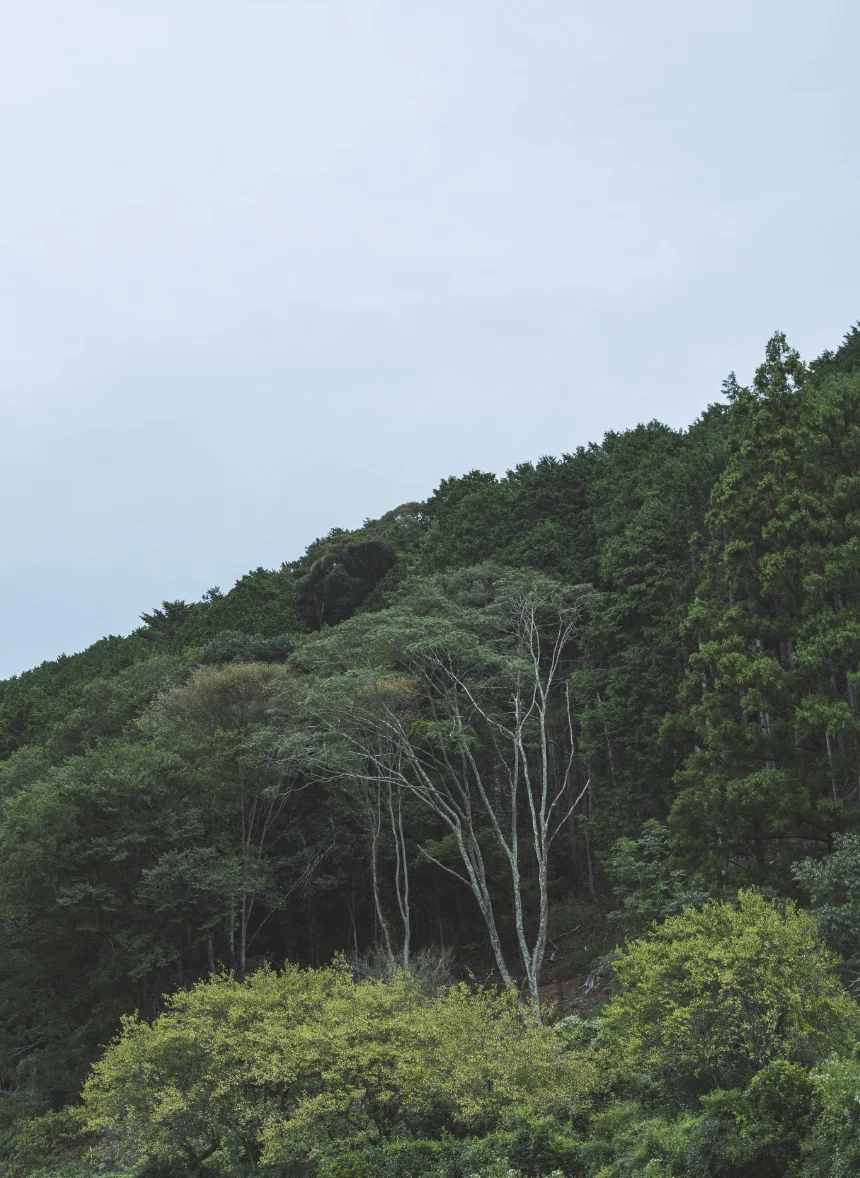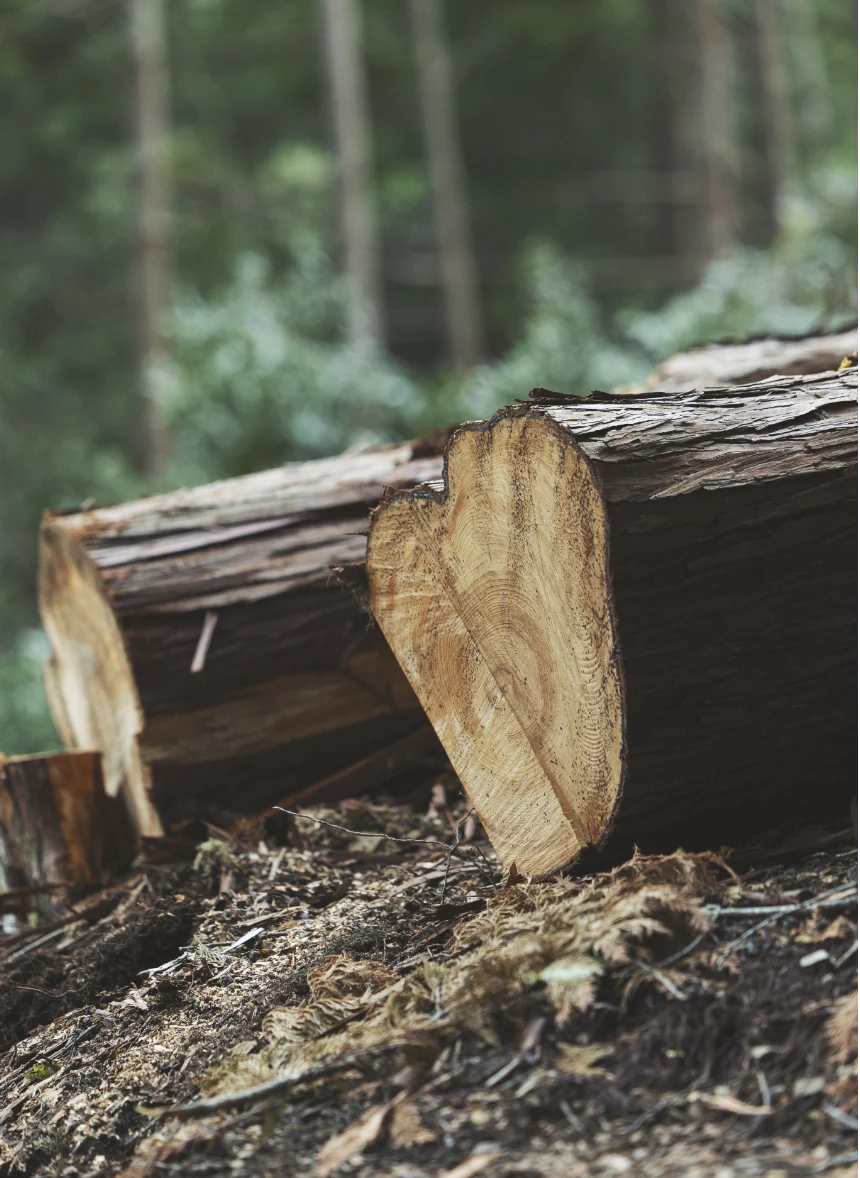「森」という未利用資源を知る
小柳津 駿 / 新城市役所 産業振興部
# もりがたり
森に目を向け、足を運んでもらうために
市としてサポートすべきこと
新城市は、土地面積の80%以上を森林が占めている。しかし林業の担い手が少なくなってきていることで多くの森が放置されている。また、良材として出せない枝虫材も多く、森自体に価値がないとみなされてしまう現状があった。木材の他にも、県内一の梅の産地でありながら、後継者不足で衰退しつつある梅産業の立て直しや、鳥獣害対策で、年間約1200頭も駆除されている鹿のジビエ活用など、未利用資源に価値を生み出すための新しい事業は、市としても関わっていきたいと思い、事業を展開してきた。そのひとつが、今回のプロジェクトにつながっている。僕自身、枝虫材と呼ばれる材について、新城キッコリーズの田實さんから聞いて初めて知った。一般の人の多くも、きっと知らないので、ただ見た目がきれいな木材を選び、無駄になってしまうたくさん木があることに気づかない。だから、もっと森のことを知ってもらって、森に足を運ぶきっかけをつくりたいし、田實さんたちのように、この先、何十年、何百年先を考えて実践している森づくりを支援していきたい。そしてこういった活動を、新城市の中だけで完結させるのではなく、県外、国外ともっと外に出ていって、さまざまな人の目に触れてもらいたいと願っている。
Knowing the Untapped Resource Called “Forest”
Shun Oyaizu / Shinshiro City Office, Department of Industrial Promotion
# MORIGATARI
What the City Should Do to Encourage People to Look Toward the Forest and Step Inside It
Over 80% of Shinshiro City’s land area is covered by forests. However, with the decline in forestry workers, many of these forests have been left unmanaged. There is also an abundance of branch- and insect-damaged wood that cannot be sold as high-quality timber, leading to the misconception that these forests have little or no value. Beyond timber, Shinshiro is also the top producer of plums in Aichi Prefecture, yet the industry has been in decline due to a lack of successors. In addition, around 1,200 deer are culled each year as part of wildlife damage control, and the effective use of this game meat is another untapped resource. Recognizing these issues, the city has sought to create value from such underused resources by supporting new initiatives—one of which has led to the current project. Personally, I first learned about “branch- and insect-damaged wood” from Mr. Tajitsu of Shinshiro Kikkorys. Many ordinary people probably don’t know about it either. They tend to choose only visually appealing wood, unaware of how many usable trees go to waste. That’s why I want more people to learn about our forests and to have reasons to visit them. I also want to support people like Mr. Tajitsu, who are working with a long-term vision—thinking not just in years but in decades and centuries—to nurture the forests for the future. And more than that, I hope these efforts won’t remain confined within Shinshiro, but will spread beyond the city—to other prefectures, and even to audiences overseas—so that many more people can see and engage with what we’re doing.


